News
The Telegraph Offered Instant Communication 161 Years Ago this Week
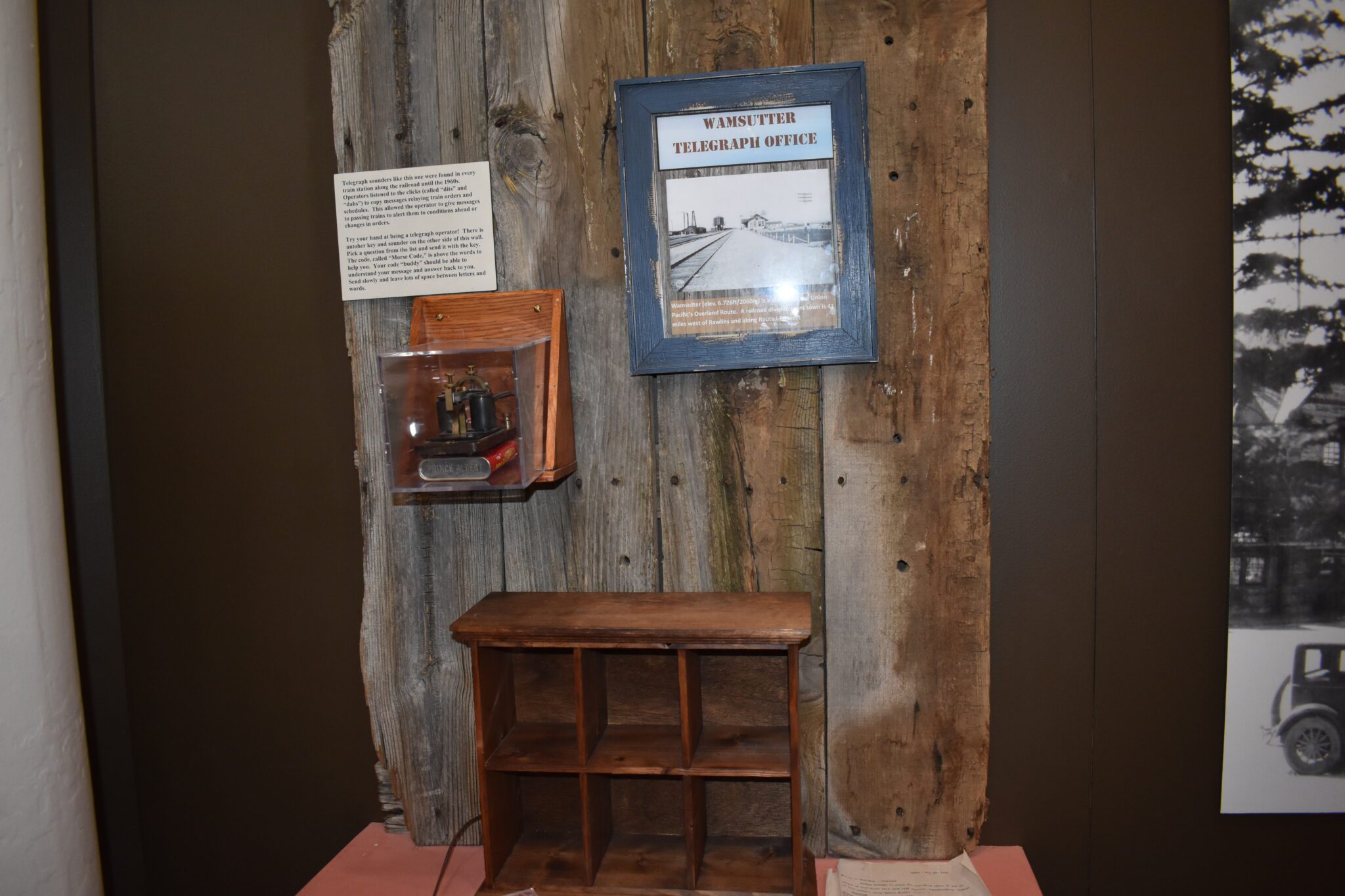
Display at Cheyenne Depot Museum (vannoy photo)
On October 24, 1861, the Western Union Telegraph Company completed the link between the Eastern and Western Telegraph lines at Salt Lake City, Utah. The transcontinental line allowed instantaneous communication between Washington, D.C., and San Francisco, and all points in between.
In 1844 the first United States telegraph line was opened between Washington and Baltimore.
From The Enterprise Sheridan and Johnson County, Feb. 1888. Morse and his Telegraph.The National Museum at Washington has the original Morse telegraph instrument, and it was on this instrument that the first telegraphic message in the world was sent. This line ran from Washington to Baltimore and the first words were: “What hath God wrought?” Shortly after the line was completed there was in political convention held at Baltimore, which nominated President and Vice-President.
To show how little the people then knew of the telegraph, no less a man then the Secretory of the Treasury asked Morse how large bundle could be sent over the wires, and he wanted to know whether it might not be possible for the United States mail to be carried by them. A congressman brought a bundle of dirty shirts to the telegraph office in the Capitol and wanted them sent to Baltimore for washing, Dolly Madison sent a message to a friend of hers in Baltimore and said the telegraph was the great excitement of the hour. Morse at this time offered his whole right in the patent to the Government for $100,000 and was fortunately for him, laughed at and refused.

The message to be sent was translated into Morse Code, a series of pulses, short and long, called dashes or dots. These pulses encode the letters and other characters that spell out the message, and the sender was charged so much per word. A telegraph key was a specialized electric switch, which was used by a trained operator, to send the message. Women were also hired as telegraph operators, and later as telephone operators as well.
From The Enterprise, March 1898 – According to the results of a special study among telegraph operators, conducted by Mr. Noble Harter and Prof. W, L. Bryan of the Indiana University, each operator has a telegraphic language of his own differing in various particulars from the typical form, although all can, of course, understand one another. Tho greatest number of words known to have been sent in one ‘minute by the Morse code is forty-nine. The average sending rate per minute is from twenty to twenty-four words of four letters each. Skillful operators can usually receive faster than they can send, but with beginners the case is reversed.
Telegraph lines were strung across the country, many following the railroad right-of-way. At first, the railroad considered the lines along the tracks a nuisance, but by 1851, the railroads began to see how convenient the telegraph could be. The telegrapher maintained communication between the train dispatcher and trains operating on the rail system. Many telegraphers at the small train stations, in addition to working for the railroad, also worked for various telegraph companies as a way to supplement their wages.
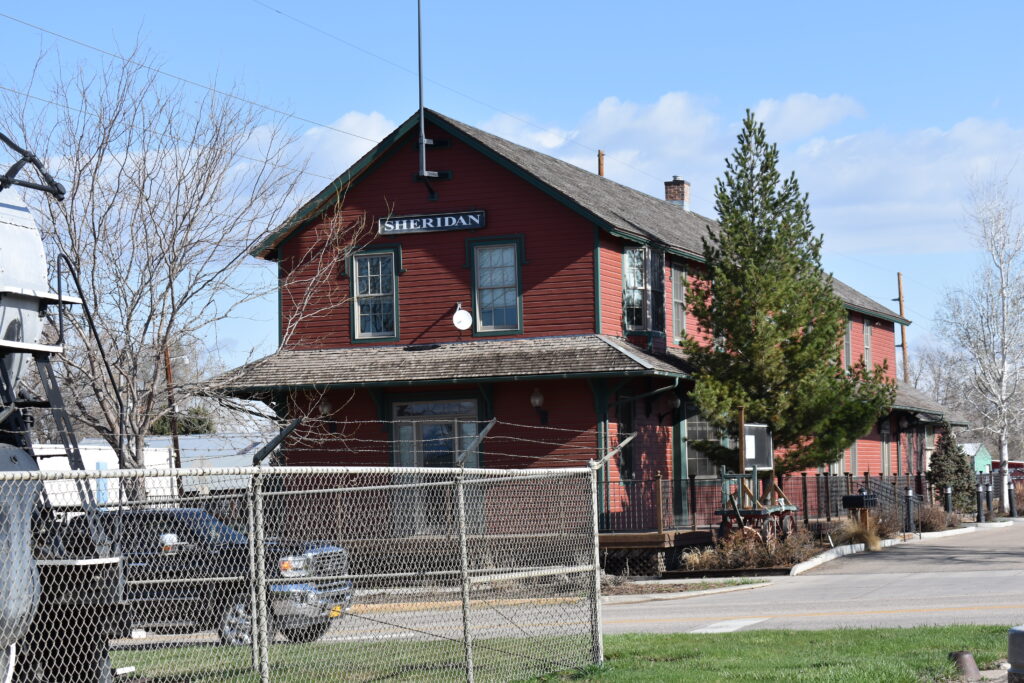
News came across the wires, and with the train stations housing the telegraph and the operator. People would come to the depot to hear the breaking national news; gamblers wanting results of prize fights and horse races back east, as well as exchanging local news and receiving telegrams from far flung friends and relatives. Although many were located in train depots, telegraph offices could be located anywhere.
From the Wyoming Semaphore, Shoshoni, Fremont County, September 1906 Big New Shoe Building Is Dedicated by the W. L. Douglas Co. The dedication a short time ago of the new administration and jobbing house building erected by the W. L., Douglas Shoe. The new building is two stories in height. There will be finely appointed sample room on the second floor, with an office in which both, telephone and telegraph will be installed, with operators, both Western Union and Postal Telegraph wires to be used. There will also be arrangements for the receipt and dispatch of mail.
Along with the railroad, towns wanted the telegraph lines as well to bring the outside world to the community.
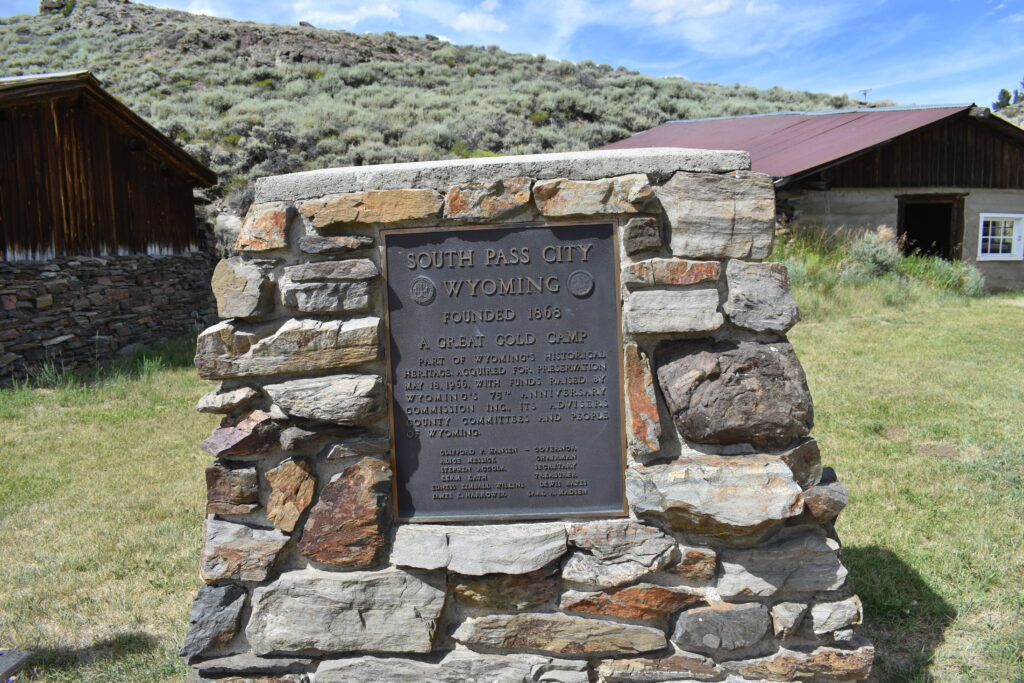
From the Sweetwater Mines Fort Bridger March 1868 – The County of Carter, in which South Pass City located, has been set off by the Legislature of Dakota Territory, (Wyoming Territory was established in July of that year) and County officials have been appointed. Thus you will observe that complete organization for the government of the people has been effected, and they now await the establishment of Post Office, that they may have communication with the outer world. At present their only communication is by private express the cost of single letter being not less than one dollar. The population of South Pass City in one or two months from the present date will be at least three thousand, and judging from reports presumed to be reliable, by the 4 of July next, there will be population of ten thousand persons to celebrate, at that point, the nation’s anniversary.
In a short period, South Pass City will be connected by telegraph with the political and commercial centers of both the East and the West. The agent and superintendent of the Western Union Telegraph Co. for this Department is already completing arrangements for the extension of the wires to that point. Thus will they be connected with the different points of travel, and all that now remains to complete perfect communication, is the establishment of Post Office at South Pass City.
Although the telegraph was a faster link from east to west coast, and between towns, like most new and improved technology, it was bound to put some of the other enterprises out of business. One was the Pony Express.
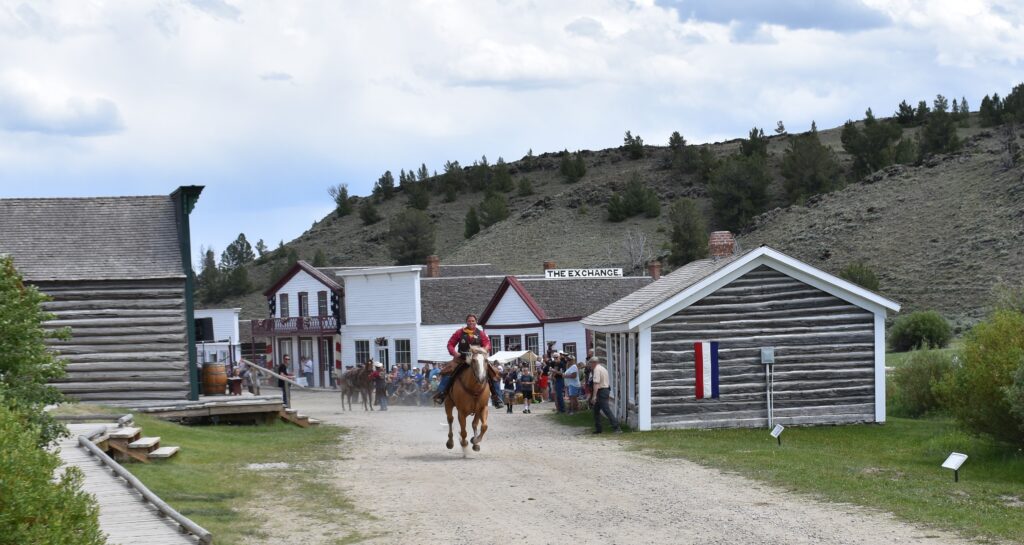
According to the Laramie Republic in April of 1897: Residents of Colorado and the great plains region of today, even the oldest of them, have almost forgotten the story of the Pony Express, although a few of the original riders are still among us. In the winter of 1859-60, Senator William M. Gwin of California, Alexander Majors and Daniel E. Phelps, who had been managing one of the stage coach lines across the country for several years with a good profit, met at Washington, and receiving assurance from the business men of New York and Boston and the United States government officials that a fast express line from the Missouri River to California would be patronized by them, they decided upon a pony express. The trial trip started from Sacramento on April 3rd, 1860, and St. Joe was reached in 11 days.
When the first transcontinental telegraph went into operation in June, 1862, the Pony Express came to an end. The Pony Express was a financial success. Nothing showed congress and the capitalists more clearly the extraordinary demand there was for quick communication across the plains, and the profit there would be in transcontinental telegraphs and railroads to investors and projectors.
During the Plains Indian Wars, the military made use of the telegraph to send messages back and forth to the frontier commanders. But sometimes there was limited telegraph service, as in this article from the Laramie Republican, July 1900, about the Connor Expedition. – In the summer of 1865, there were over 17,000 volunteer troops in service in the district of the plain, General P. B. Connor, commanding. There were no newspaper correspondents with the troops on the plains, no telegrams were flashed over the wires, for there was only one wire and that was along the Platte. Our service was at times 300 miles from the nearest telegraph station.
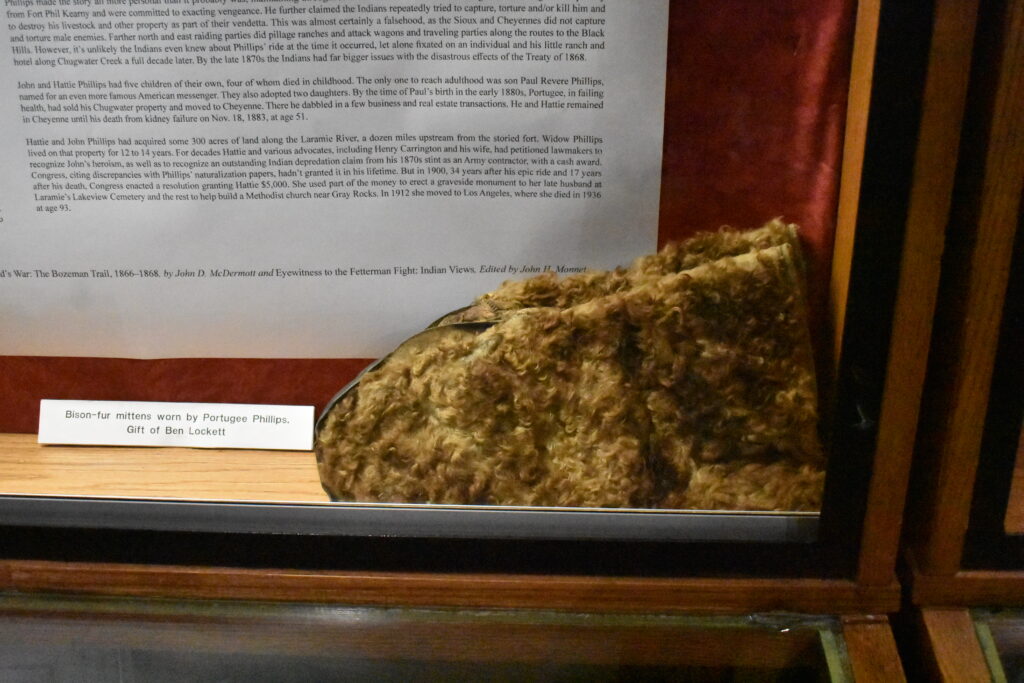
This was the problem at Fort Phil Kearny near Story, after the Fetterman Fight, when a brave civilian, John “Portugee” Phillips, made his famous winter ride. The nearest telegraph station was Horseshoe Creek Station, near Glendo. Phillips and the other rider who went with him, stopped at the station, warmed up some, and sent a telegraph to Fort Laramie. But Phillips, not trusting the telegram would be delivered, mounted his tired horse and continued on the 26 miles to Fort Laramie. He arrived at Bedlam Hall at the Fort on Christmas Day, cold and exhausted, and delivered the dispatches.
For many years, until the telephone became the communication method of choice, the telegraph was the only one for fast communication.
In the Magic City Record, Cheyenne, Jan. 1891, from the Buffalo Bulletin, A telegram from Senator Warren to Mayor Elliott received today says, “Fort McKinney likely to be fully and permanently occupied very soon.”
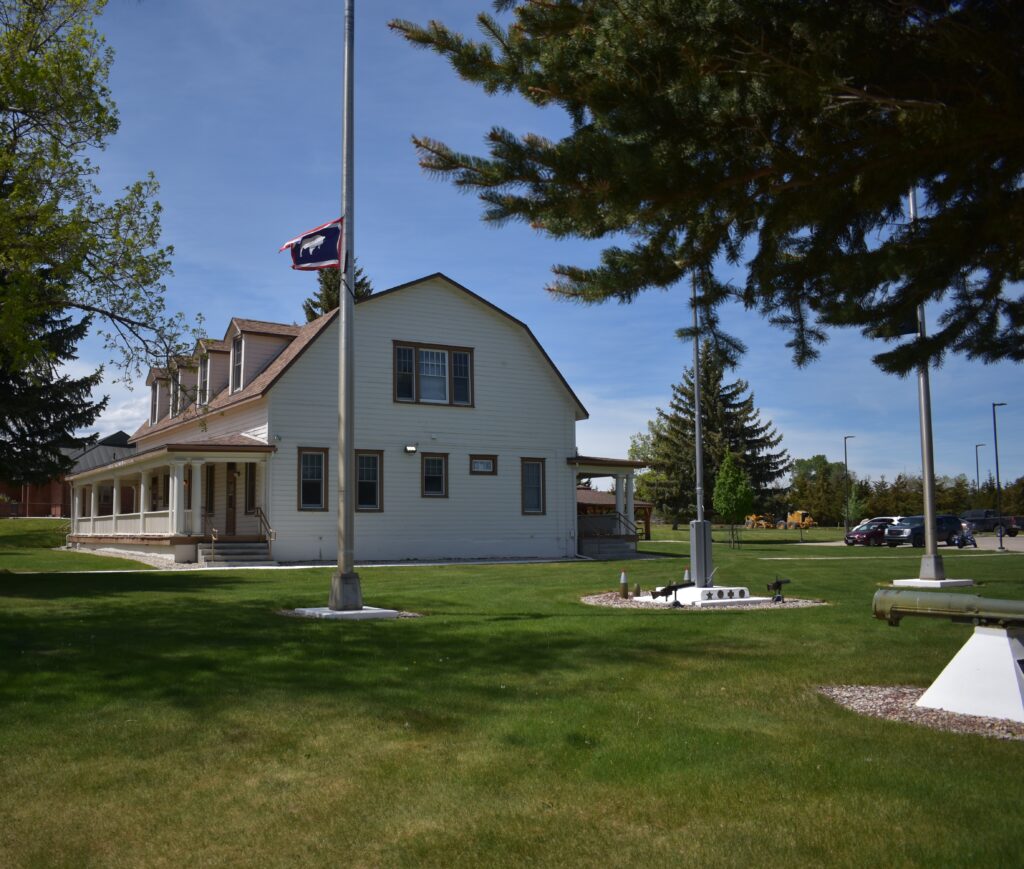
Like today, the media was not always trusted by everyone, as it this clip from the above quoted Magic City Record.
The military have taken possession of the telegraph line from Pine Ridge to Rushville, Hereafter we presume we will get only such news by telegraph only as the authorities see fit to dish out.
Even after the Indians were mostly all on reservations, following the Custer Battle, these is this from The Sheridan Enterprise, Jan. 1891
Washington Jan. 6.— Gen. Schofield has received two telegrams from Gen Miles regarding the Indian troubles, the first dated Pine Ridge, Jan. 3, and giving a list of the casualties resulting from the skirmish with the Indians of White Clay creek Dec 30.
The governor sent telegrams to C.H. Weller, of Harrison, and Charles Mann, of Chadron, that troops are on the way. In response to a telegram Buffalo Bill was at the state house to-night and had a long conference with Gov. Thayer. As a result Mr. Cody was commissioned to go to the seat of the Indian trouble on a special mission. He will leave for Pine Ridge at 8 in the morning.
The telegraph also made a big different in law enforcement on the plains. It was one of the methods that helped to bring law and order to the Old West.
OP Hanna of Big Horn City talked about one of his experiences with outlaws in The Sheridan Post, October 23, 1921. It was said they were a part of the James Gang and had robbed the Trabing Store. Hanna said, “That night I went to Fort McKinney and sent a message to Laramie that I had found the road agents’ camp.” Unfortunately, the outlaws were no longer there when the law arrived.
As today, news outlets want to let readers know that they are getting the most up-to-date news.


Today, with instantaneous news from everywhere via satellite phones faxes, and the internet, it is hard to imagine how slow communication was back during the early part of the 20th century. Ships took several weeks to get news back and forth across the Atlantic, and trains and stage coaches could only travel so fast. Even the Pony Express took 11 days from Missouri to California.
By remembering how long it took to get news back and forth, we can see how far technology has advanced, and why the telegraph linking the nation was big news in 1861.

